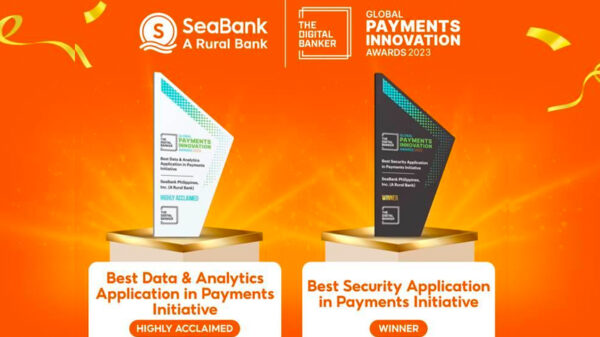Microfinance organizations in the Philippines will now be able to efficiently and cost-effectively serve their clients—the entrepreneurs and small businesses—and grow, with the help of cloud computing.
Mambu, a Berlin-based microfinance and banking technology services provider, has chosen the Philippines as the first Asian country to launch its banking software service delivered online in a SaaS model. The company already has three customers in the Philippines: Lenddo, MegaMitch and Negosyong Pinoy Finance Corp. (NPFC). The company has also chosen the Philippines as one of its two global service delivery hubs. The other one is in Colombia.
Mambu’s entry into the Philippines comes at a right time. In August this year, the Bangko Sentral ng Pilipinas released a circular announcing that banks may use cloud computing technology to increase their competitiveness.
Established in 2011, by founder and CEO Eugene Danilkis, Mambu’s clients range from small microfinance organizations to large retail banks and other financial innovators that are seeking to address the financial needs of the world’s 250 million micro, small and medium enterprises in need of loan, savings and insurance services.
Microfinance organizations, those aiming to provide essential loan and deposit services to the bottom of the economic pyramid, are for all intents and purposes, banks. Like banks, they also have to do many of the critical things a bank does to manage its business, including managing and tracking clients, monitoring risk, maintaining an audit trail and reporting to regulators, donors and association stakeholders to justify their existence. At the same time, they also need to attract new clients, provide the right kind of products, and grow their business. A tough job, and an impossible one without the right tools and technology.
“Information and knowledge sit at the heart of the banking system: from the customer, to their account to the aggregate balance sheet of the organization,” said David Hamilton, President of Mambu GmbH. “But without the technology to access to this critical information, microfinance organizations will struggle to scale to service the three billion unbanked individuals and quarter of a billion underserviced micro, small and medium enterprises around the world.”
Hamilton explains that cloud computing helps microfinance organizations overcome many challenges, such as underdeveloped banking infrastructure, distorted lending practices and lack of the right financial information.
With the Mambu platform, microfinance organizations will not have to worry about servers, and IT infrastructure or system maintenance. With the Mambu platform, loan officers can take tablets to the field to collect loan applications in real time, accessing client data in real time.
“Mambu eliminates the complexities typically associated with core banking software, at a fraction of the cost. Mambu makes it simple and cost-effective to provide essential banking services such as loans and deposits,” says Hamilton.
The Mambu platform offers the following services: loan and deposit products and servicing; customer relationship management; portfolio and financial reporting; back office controls and automation; and integration into local ecosystems.
A “commitment fee” of US$9,000 (Php387,000) is required to access all of the Mambu services and to go live in six to 10 weeks. Hamilton explained that the fee has a corresponding service credit which could be used to pay for Mambu’s services. After the credits have all been exhausted, the client is charged a revenue-based fee.
To ensure 99.9% availability and security, the Mambu platform runs on Amazon Web Services and is PCI DSS Compliant, according to Hamilton.
“Mambu is safely stored on multiple data centres in different regions around the globe. So even if one server stops working, another server elsewhere can immediately take over and continue serving your data,” said Hamilton.
Mambu customers have their own database protected against external intruders and isolated from other Mambu users. Web application servers are physically and logically separated from servers that store customer data.
New local client
Mambu also announced that Negosyong Pinoy Finance Corporation (Venture South Philippines) is its newest customer.
Established in 2011, NPFC, an SME-focused financing company, provides loans and other services to entrepreneurs and small businesses that are looking to grow their businesses and need access to working capital in order to do so. NPFC has an office in Pasig and also covers the province of Cebu with a portfolio of Php87.7 million as of September 31, 2013. The portfolio will approach Php120 million by the end of the year. Aside from the Philippines, Venture South also operates in Colombia.
NPFC’s adoption of the Mambu platform will help the company achieve scale by expanding its business and extending services to more of the country’s micro, small and medium enterprises.
Mambu will also help NPFC improve its customer service through Mambu’s mobile workforce Android app, giving field staff access to real time data on-the-go; and through Mambu’s client portal, which will give NPFC clients more direct access and control of their accounts than ever before. The implementation is expected to go live by the end of November.
Reshaping the banking landscape
Hamilton explains that cloud technology will help reshape the landscape of banking on a few fronts. From the bottom of the pyramid, microfinance organizations will be better able to service sole proprietorships and micro businesses at a scale that makes them sustainable. They will also be able to begin to attract the talent and capital to extend services to the SME sector, which is so critical to their business and the local economies.
Cloud banking technology will also integrate easily with new distribution channels allowing banks to better service the $320B MSME banking opportunity in emerging markets, and work alongside – or compete against – microfinance organizations to ensure that the 60% of underserviced MSMEs in emerging markets won’t remain so for long.
According to Hamilton, cloud technology has made it possible for smaller financial institutions to compete in industries, like banking, that until recently required significant investment and held an ‘unfair’ advantage for banks.



















































































































